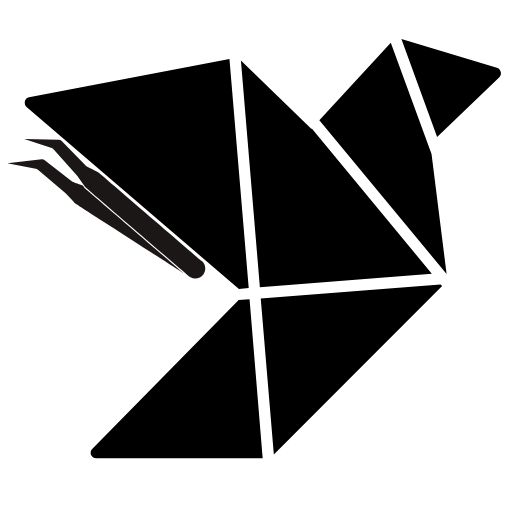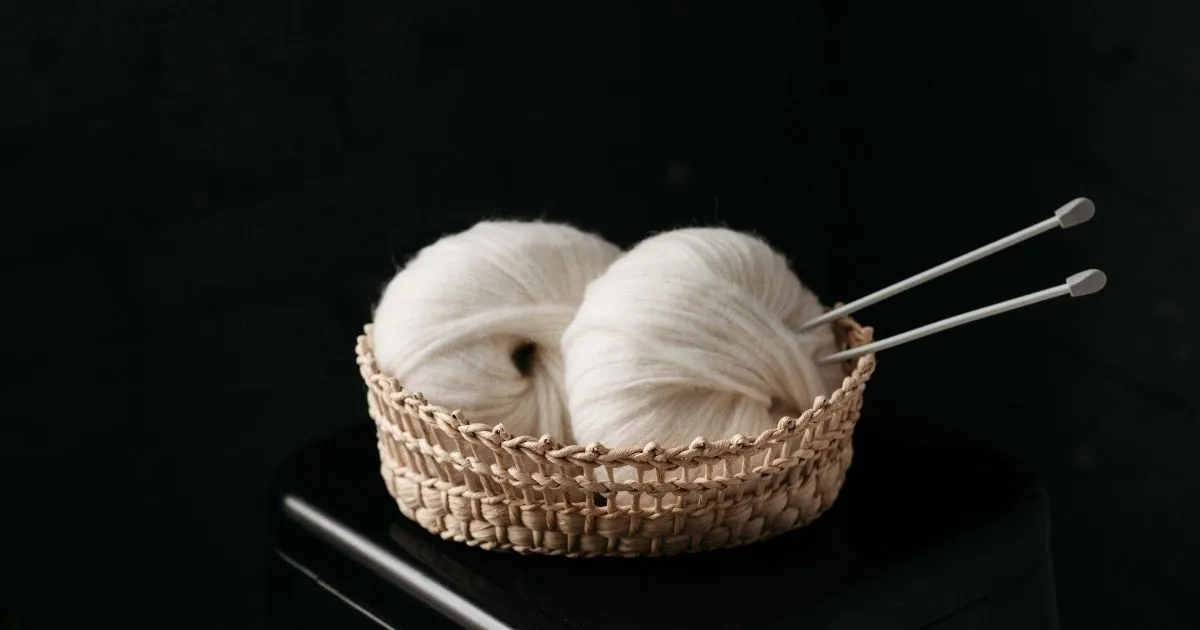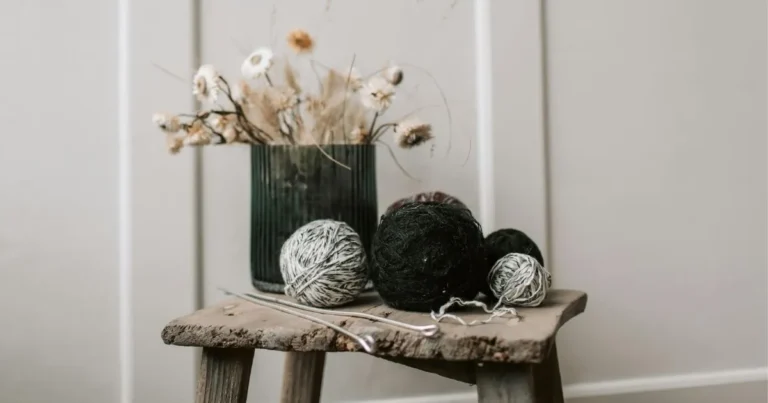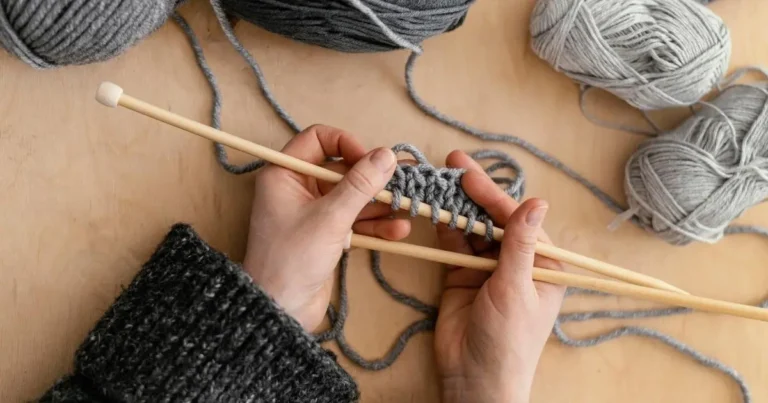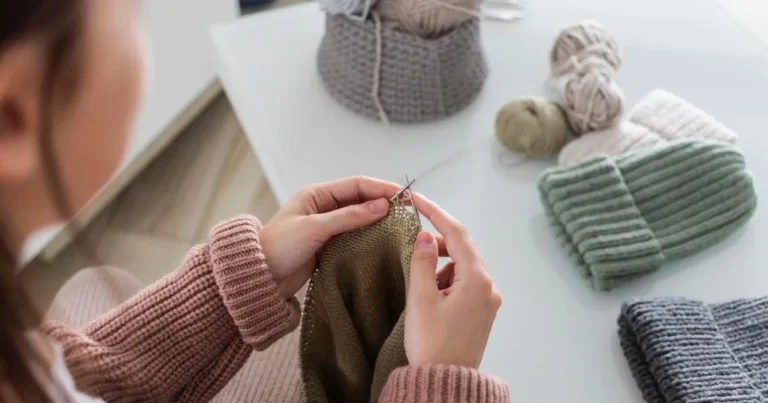Knitting And Crochet: A Fun and Creative Comparison for Beginners
Crafting with yarn is a favorite hobby for many. Knitting and crochet are two top choices. They both make fabric from yarn but in different ways.

If you’re new to these yarn crafts, knowing the differences is key. It helps you pick the right project. Whether you’re experienced or just starting, understanding knitting and crochet can make your crafting better.
Key Takeaways
- Crafting techniques differ significantly between knitting and crochet.
- Yarn choice can affect the outcome of your project.
- Understanding the tools and materials needed is essential.
- Both knitting and crochet offer a range of creative possibilities.
- Choosing between knitting and crochet depends on personal preference and project goals.
The Fascinating World of Yarn Crafts
Yarn crafts, like knitting and crochet, have a long history. They’ve been around for thousands of years. These crafts have given us clothes and textiles and have also helped express culture and build communities.
Historical Origins of Both Techniques
Knitting started in the Middle East in the 11th century. Crochet has roots in South America and Europe. Both have changed over time, thanks to trade and cultural sharing.
Why Fiber Arts Are Experiencing a Renaissance
Yarn crafts are getting more popular again. This is thanks to the crochet community and knitting fans. People want handmade, eco-friendly items and enjoy the calm of creating something by hand.
Understanding the Basic Techniques
Learning knitting and crochet starts with knowing their basic techniques. Both crafts make fabric from yarn, but they work in different ways.
Knitting: Working with Multiple Live Stitches
Knitting uses two needles to make rows of loops. It can make many kinds of fabrics, from light and airy to thick and warm.
The Two Basic Stitches: Knit and Purl
The knit and purl stitches are knitting’s base. The knit stitch makes a smooth fabric, while the purl stitch creates a bumpy one. Mixing these stitches lets knitters make complex and lovely designs.
How Stitches Build Upon Each Other
As knitters add row after row, the stitches grow, making a fabric that can be soft, warm, or strong. Knowing how to work with these stitches is crucial for making good beginner knitting projects.

Crochet: Working One Stitch at a Time
Crochet uses one hook to make chains of stitches. It’s easy to learn and projects can be made quickly.
Foundation Chains and Basic Crochet Stitches
Most crochet patterns start with a foundation chain. This chain is the base for all the stitches that follow. Crocheters use stitches like the single crochet and double crochet to make different textures and patterns.
Creating Texture Through Stitch Combinations
Crocheters can mix basic stitches to get many textures and effects. This makes crochet great for making everything from delicate lace to sturdy advanced crochet techniques projects.
Essential Tools and Materials
Whether you’re a seasoned crafter or just starting, the right tools are crucial for knitting and crochet. The quality and type of tools you use can greatly affect your project’s outcome.
Knitting Equipment Breakdown
Knitting needs specific tools to create the fabric you want. The main tool is the knitting needle.
Types of Needles and Their Uses
Knitting needles are made from materials like aluminum, wood, and plastic. Aluminum needles are durable and smooth, perfect for most projects. Wooden needles are warm and gentle on your hands. Plastic needles are lightweight and flexible.
Accessories That Make Knitting Easier
Other key supplies include stitch markers, yarn needles, and measuring tapes. Stitch markers help track patterns, and yarn needles are for weaving ends.

Crochet Tools Guide
Crochet projects need hooks and basic tools. Knowing the different types of hooks and their uses is important.
Hook Sizes and Materials
Crochet hooks come in various sizes and materials, like knitting needles. The hook size affects the stitch tension, and the material impacts comfort and use.
Helpful Notions for Crochet Projects
For crochet, the right notions make crafting better. This includes yarn, tapestry needles for weaving ends, and scissors.
| Tool | Knitting | Crochet |
|---|---|---|
| Primary Tool | Knitting Needles | Crochet Hook |
| Notions | Stitch Markers, Yarn Needles | Tapestry Needles, Scissors |
Understanding and investing in the right tools and materials can enhance your knitting and crochet. It connects you to a vibrant community of crafters who share tips, patterns, and inspiration.
Key Differences Between Knitting and Crochet
Knowing the differences between knitting and crochet is key for crafters. Both are loved yarn crafts, but they make different fabrics. These fabrics have unique properties.
Fabric Structure and Properties
The main difference is in fabric structure. Knitting makes rows of loops that connect, creating a flexible, dense fabric.
Drape and Flexibility Comparisons
Knitted fabrics drape well and are flexible. This is because knitting’s loops allow for more stretch.
Durability and Stretch Factors
Crocheted items are durable and less likely to unravel. But, they don’t stretch as much as knitted ones.
Time Investment and Learning Curve
Time to finish a project and learning curve differ. Crochet is quicker because of its larger stitches and simpler method.
| Craft | Time to Complete | Learning Curve |
|---|---|---|
| Knitting | More time-consuming | Steeper learning curve |
| Crochet | Faster to complete | Easier to learn |
Yarn Consumption and Project Costs
Yarn use differs between knitting and crochet, affecting costs. Crochet uses more yarn than knitting for similar projects.
Understanding these differences helps crafters make better choices. They consider time, cost, and the project’s outcome.
Choosing Between Knitting and Crochet
Deciding between knitting and crochet can greatly affect your project’s outcome. Each craft has its own strengths and weaknesses. These differences make one better suited for certain projects than the other.
Projects Better Suited for Knitting
Knitting is great for projects needing a specific drape or texture. Garments that fit closely to the body, like sweaters or socks, work best with knitting.
Garments and Items Requiring Drape
Knitting is perfect for making fabrics with great drape. This is why it’s ideal for shawls, scarves, and fitted sweaters. It also allows for complex patterns and textured designs, making it a favorite among designers.
Techniques Unique to Knitting
Cable knitting and lace knitting are unique to knitting. These techniques add intricacy and visual interest, turning simple projects into masterpieces.
When Crochet is the Superior Choice
Crochet is better for projects needing structural integrity or three-dimensional shaping. Amigurumi toys and market bags are great examples of projects that benefit from crochet’s abilities.
Three-Dimensional and Structural Projects
Crochet is great for creating rigid, three-dimensional shapes. This makes it perfect for amigurumi figures and baskets. The stiffness of crochet fabric is also useful for items that need to keep their shape.
Techniques Only Possible in Crochet
Crochet allows for creating complex, interlocking motifs. This makes it possible to create unique, intricate designs that knitting can’t achieve.
In conclusion, choosing between knitting and crochet depends on your project’s needs. Knowing the strengths of each craft helps you make the right choice for your project’s success.
Popular Projects for Knitting and Crochet Enthusiasts
Knitting and crochet fans have lots of fun projects to try. There are easy patterns for beginners and complex designs for experts. Everyone can find something they like.
Beginner-Friendly Knitting Projects
Newbies to hand knitting should start with simple projects. Scarves, hats, and basic blankets are great for beginners. They need little shaping and follow easy patterns.
Easy Crochet Projects for Newcomers
Beginners in crochet can start with granny squares, dishcloths, or baby booties. These projects are easy and make you feel proud. They help you learn basic crochet patterns and stitches.
Advanced Techniques to Aspire To
As you get better, you can try more complex projects. These include intricate patterns, cables, or lacework. Advanced techniques can be used in many yarn crafts, like clothes or home decor.
Whether you’re new or experienced, knitting and crochet offer endless fun. There’s always something new to try and learn.
Conclusion: Embracing Your Fiber Craft Journey
Knitting and crochet open up a world of creativity and community. Whether you love knitting’s detailed patterns or crochet’s flexibility, there’s much to explore. You can express yourself through yarn crafts in many ways.
The crochet community is especially welcoming. It’s easy for newbies to join and find their spot. As you keep crafting, you’ll find projects that match your skills and interests. You can make everything from cozy blankets to stylish decorations.
By diving into knitting and crochet, you’re not just making something. You’re also joining a community that loves yarn crafts as much as you do. So, grab your needles or hook, and let’s start creating!
FAQ
What is the best yarn to use for beginners in knitting and crochet?
Beginners should start with a medium-weight yarn. Look for soft, easy fibers like acrylic or cotton. Brands like Bernat, Lion Brand, and Red Heart are great for learning.
How do I choose the right knitting needles or crochet hook for my project?
The right tool depends on your project, yarn, and preference. Check the yarn label for needle or hook sizes. Think about the fabric you want to make. For knitting, you might need straight, circular, or double-pointed needles. Crochet hooks come in aluminum, steel, or ergonomic types.
What are some beginner-friendly knitting projects?
Start with simple projects like scarves, hats, or dishcloths. These projects are easy and help you practice basic stitches. Look for patterns labeled “beginner-friendly” or “easy” to start.
Can I use the same yarn for both knitting and crochet?
Yes, many yarns work for both knitting and crochet. But, the right yarn depends on the project’s weight, fiber, and texture. Always check the yarn label for recommendations.
How do I join a crochet or knitting community?
Joining a community is easy. Search online for local groups, attend classes, or join forums like Ravelry or Moogly. Yarn stores also host events and workshops, perfect for meeting other crafters.
What are some advanced techniques I can try in knitting and crochet?
Once you know the basics, try advanced techniques like cables, lace, or Fair Isle knitting. In crochet, try intricate patterns and 3D designs. Experimenting with yarns, colors, and textures adds complexity and interest.
How can I troubleshoot common mistakes in knitting and crochet?
First, identify the mistake – like a dropped stitch or miscounted row. Then, look up online tutorials or crafting websites for help. Many patterns also have troubleshooting tips.
